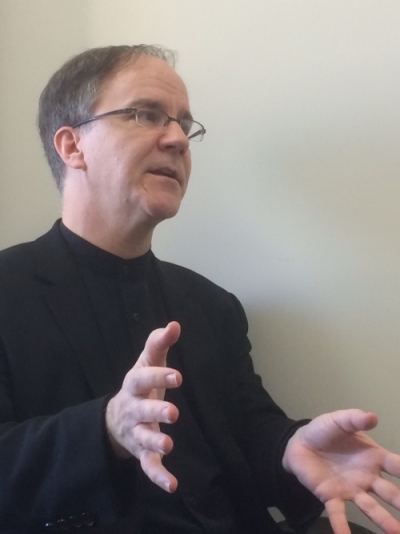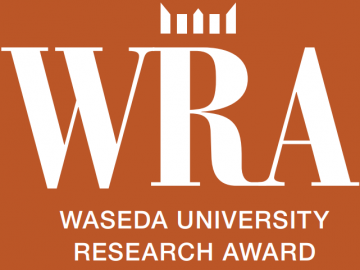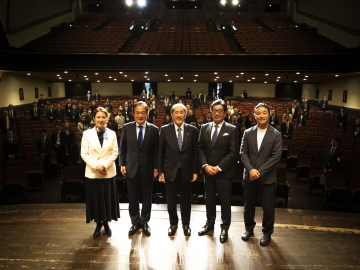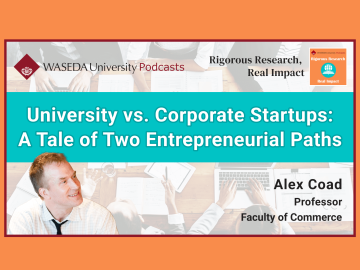With adoration for Asia and cinema
 Cinema was first introduced in the late 19th century and brought to Japan only a few years later where it began to develop in very different ways to that of the West. Yet, no one has ever studied Japanese cinema from the perspective of the history of film theory and its acceptance and influence in Japanese society. Except for one researcher.
Cinema was first introduced in the late 19th century and brought to Japan only a few years later where it began to develop in very different ways to that of the West. Yet, no one has ever studied Japanese cinema from the perspective of the history of film theory and its acceptance and influence in Japanese society. Except for one researcher.
Aaron Gerow. A professor of Japanese and East Asian film studies at Yale University and a researcher at Waseda University. Gerow was born in Seattle to an American family and raised in Chicago. So what inspired him start researching Japanese films, visit Japan and select Waseda University for his research station?
Gerow’s father was a scholar of Sanskrit. When he was three, his father took him to India for 18 months, which he believes may have been one of the reasons behind his initial interest in Asia. However, it wasn’t until his last year of high school that he became truly fascinated with films, “I spent many nights going out to the movies. That was when my passion for films really began to grow.” With his enthusiasm for film, Gerow decided to start taking film studies courses at Columbia University in New York, a haven for moviegoers. Every Wednesday for a year he would visit a repertory theater to see triple features of Japanese samurai movies. Though he was interested in a variety of film genres, Gerow chose to focus his research on Japanese cinema. In 1992, while enrolled in a Ph.D. program at the University of Iowa, then the best university for cinema studies, Gerow visited Japan to do his dissertation research and decided to stay. It was during this time that his affiliation with Waseda University began.
Paradise of Japanese film resources
 The theme of his dissertation was “early cinema in Japan.” He researched how cinema was introduced and defined in Japan, and discussed the intricacies of its fascinating development. “For a long time, early cinema was considered primitive, not what cinema should be. That was a problem, because despite the many different kinds of films, filmmaking and film experiences at the time, only one set of film making practices became dominant through history and many forgot the fact that cinema could have had a completely different history. Early cinema illustrates these different possibilities and thus people began to explore outside the dominant path. By then Japanese cinema had already been marked out as an interesting case for two unique reasons. The first is the length of its early cinema period, which lasted much longer than it did in other countries. The second is the benshi, who were performers that provided live narration for silent movies. Benshi are quite unique to Japanese cinematic history and remained a prominent phenomenon until the mid-1930s. My research showed how Japan served as an example of how these many paths were developed, shaped, and sometimes repressed in a series of conflicts.”
The theme of his dissertation was “early cinema in Japan.” He researched how cinema was introduced and defined in Japan, and discussed the intricacies of its fascinating development. “For a long time, early cinema was considered primitive, not what cinema should be. That was a problem, because despite the many different kinds of films, filmmaking and film experiences at the time, only one set of film making practices became dominant through history and many forgot the fact that cinema could have had a completely different history. Early cinema illustrates these different possibilities and thus people began to explore outside the dominant path. By then Japanese cinema had already been marked out as an interesting case for two unique reasons. The first is the length of its early cinema period, which lasted much longer than it did in other countries. The second is the benshi, who were performers that provided live narration for silent movies. Benshi are quite unique to Japanese cinematic history and remained a prominent phenomenon until the mid-1930s. My research showed how Japan served as an example of how these many paths were developed, shaped, and sometimes repressed in a series of conflicts.”
During his stay, Gerow explored the aspects of cinema that were adopted and developed in Japan from 1895 to 1925. Most of the films have been lost through time, so Gerow turned to cinema critiques and publicity articles in magazines or monographs published in Japan at the time to understand how cinema was defined. His advisor in Japan was professor Kenji Iwamoto (now emeritus) of Waseda University, a leading authority on cinema history in Japan. This gave Gerow access to Waseda University, which offers a variety of academic facilities including the Central Library. However, the place where Gerow spent most of his time was Waseda University’s Enpaku (the Theatre Museum), which was extraordinarily helpful for his research. “I remember entering the Enpaku for the first time. I had found a Japanese film resource paradise, which I had been unable to find in the US. The Enpaku is one of the best places to conduct research. Its collection is second to none, especially when it comes to magazines and journals. I spent many hours leafing through the editions of Kinema Junpo (Japan’s oldest film magazine), all of which are open for browsing.” The archives are not the only lure for those studying cinema and drama. The Enpaku also holds many events, such as the recent live Benshi performance. “Seeing a film projected on the Enpaku with a benshi is an experience I will never forget.” He strongly recommends fully using the Enpaku for research.
Enriching study through a network built at Waseda
 Upon successfully finishing his dissertation, Gerow went on to become a professor at Yale University and still continues to travel back and forth between Japan and the US for research. At Waseda University he looks for resources and conducts interviews. Through his affiliation with the International Scholar Services at Waseda University, Gerow is able to receive support for his research in the form of fellowships, an office on campus and library privileges. The wonderful atmosphere of Waseda University created by those studying the arts and the frequent visitations from filmmakers always greatly impressed Gerow. In addition to Professor Iwamoto, there were many opportunities to speak with other researchers at Waseda University to enrich his study, such as Professor Takeda Kiyoshi and Professor Yuichi Toeda of the Faculty of Letters, Arts and Sciences. Professor Takeda, who specializes in French film and theory, has been a colleague since 1992. “I participated with Professor Toeda in a Yasunari Kawabata symposium held in Paris. Though his area of study is slightly different from mine, his work has given me new insight and proved to be very beneficial to my research. As has discussion with other researchers in different fields.” Professor Masato Hase, also a member of the Faculty of Letters, Arts and Sciences, is a specialist in cultural sociology and has been an inspiring colleague of Gerow since 1992.
Upon successfully finishing his dissertation, Gerow went on to become a professor at Yale University and still continues to travel back and forth between Japan and the US for research. At Waseda University he looks for resources and conducts interviews. Through his affiliation with the International Scholar Services at Waseda University, Gerow is able to receive support for his research in the form of fellowships, an office on campus and library privileges. The wonderful atmosphere of Waseda University created by those studying the arts and the frequent visitations from filmmakers always greatly impressed Gerow. In addition to Professor Iwamoto, there were many opportunities to speak with other researchers at Waseda University to enrich his study, such as Professor Takeda Kiyoshi and Professor Yuichi Toeda of the Faculty of Letters, Arts and Sciences. Professor Takeda, who specializes in French film and theory, has been a colleague since 1992. “I participated with Professor Toeda in a Yasunari Kawabata symposium held in Paris. Though his area of study is slightly different from mine, his work has given me new insight and proved to be very beneficial to my research. As has discussion with other researchers in different fields.” Professor Masato Hase, also a member of the Faculty of Letters, Arts and Sciences, is a specialist in cultural sociology and has been an inspiring colleague of Gerow since 1992.
Currently, Gerow is working on research for his next book, a culmination of his previous work on the history of Japanese film theory. Expressing his ambition to introduce the history of Japanese film theory to more people through his next book, Gerow explained, “Film theory is very Eurocentric. Students throughout the world learn the history of film theory with a focus on thinkers from North America and Europe. There is a rich history of theoretical thinking about cinema in Japan but unfortunately few people know about it. This is where I would like to step in.”
Gerow described his current research as generative. His next book will provide a cornerstone for further Japanese film study. With support from Waseda University, Gerow’s research will continue to develop and shape the future of Japanese film study.
Links








